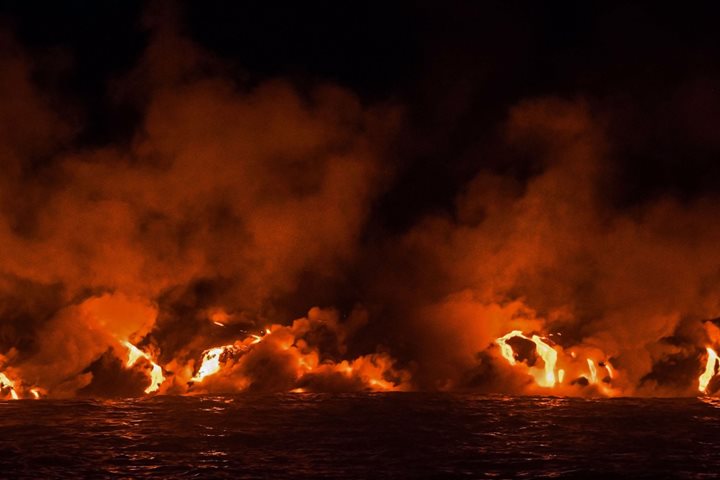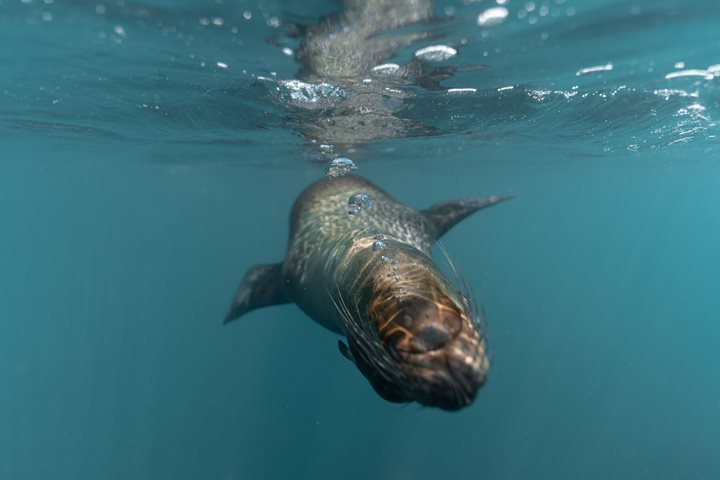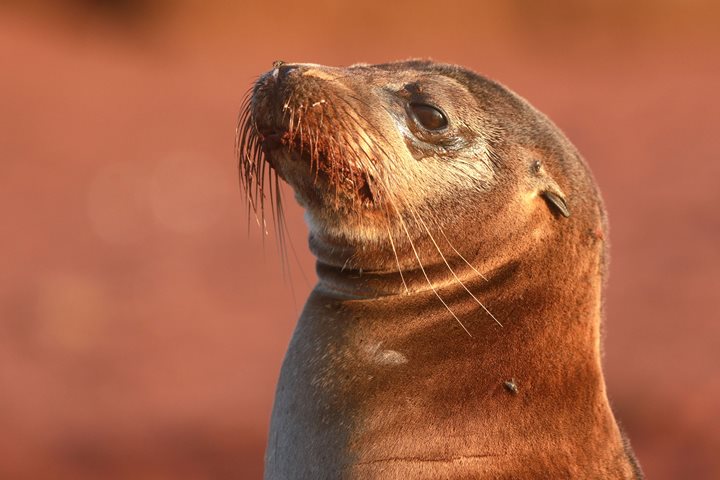We enjoyed a great day at the western part of the archipelago. The morning was spent at Urbina Bay. Exploration on land came in the form of an extended hike and a shorter nature walk. We observed Galapagos land iguanas, Darwin finches, nesting Galapagos mockingbirds, and Alcedo giant tortoises. There was time for a nice swim at the black sandy beach. Then we repositioned National Geographic Islander toward Tagus Cove. Here our guests enjoyed a wonderful snorkeling along the tuff cones, swimming with Galapagos penguins, flightless cormorants, Galapagos marine iguanas, and playful Galapagos sea lions! Fantastic! Tagus Cove is a must-do for kayaking and paddleboarding. We finished the day with a panoramic tour off the cove by Zodiac, which made for excellent viewing opportunities of the area’s wildlife and breathtaking scenery. Galapagos is surely a once-in-a-lifetime experience if there ever was one!
- Daily Expedition Reports
- 20 Mar 2019
Isabela Island, 3/20/2019, National Geographic Islander
- Aboard the National Geographic Islander
- Galápagos
Wilo Castaneda, Naturalist
Wilo was born and raised in the Galápagos Islands. From an early age, he was fascinated by outdoors activities, and excelled at basketball, cycling, swimming, and snorkeling. In 1999, he trained to become a Naturalist Guide for Galápagos National Par...
Read MoreShare Report
Related Reports
11/23/2022
Read
National Geographic Islander II
Isabela and Fernandina
Our day began with the chance to point out a lot of interesting geological features as we enjoyed Zodiac tours along a massive flank of Ecuador Volcano on Punta Vicente Roca. In the afternoon, we took a sunny walk on Punta Espinoza on Fernandina Island. We spotted many iguanas, and a bunch of sea lions hanging around, too.
11/22/2022
Read
National Geographic Islander II
North Seymour & Rabida Islands
Relatively small and low compared to neighboring Santa Cruz, North Seymour is located to the north of Baltra. The island is dry with predominantly low shrubs, like prickly pear cacti. The incense trees are bare during the dry season. Seabirds like frigatebirds and blue-footed boobies nest on the island, and sea lions rest on the sand when they are not fishing. Land and marine iguanas also live here. Rabida is in the middle of the archipelago and has a striking red sand beach. We observed a small colony of sea lions of all ages resting or nursing. Behind the beach, American flamingos nest in a brackish lagoon. This island is full of contrasts and wildlife that we enjoyed observing during this day of expedition.







